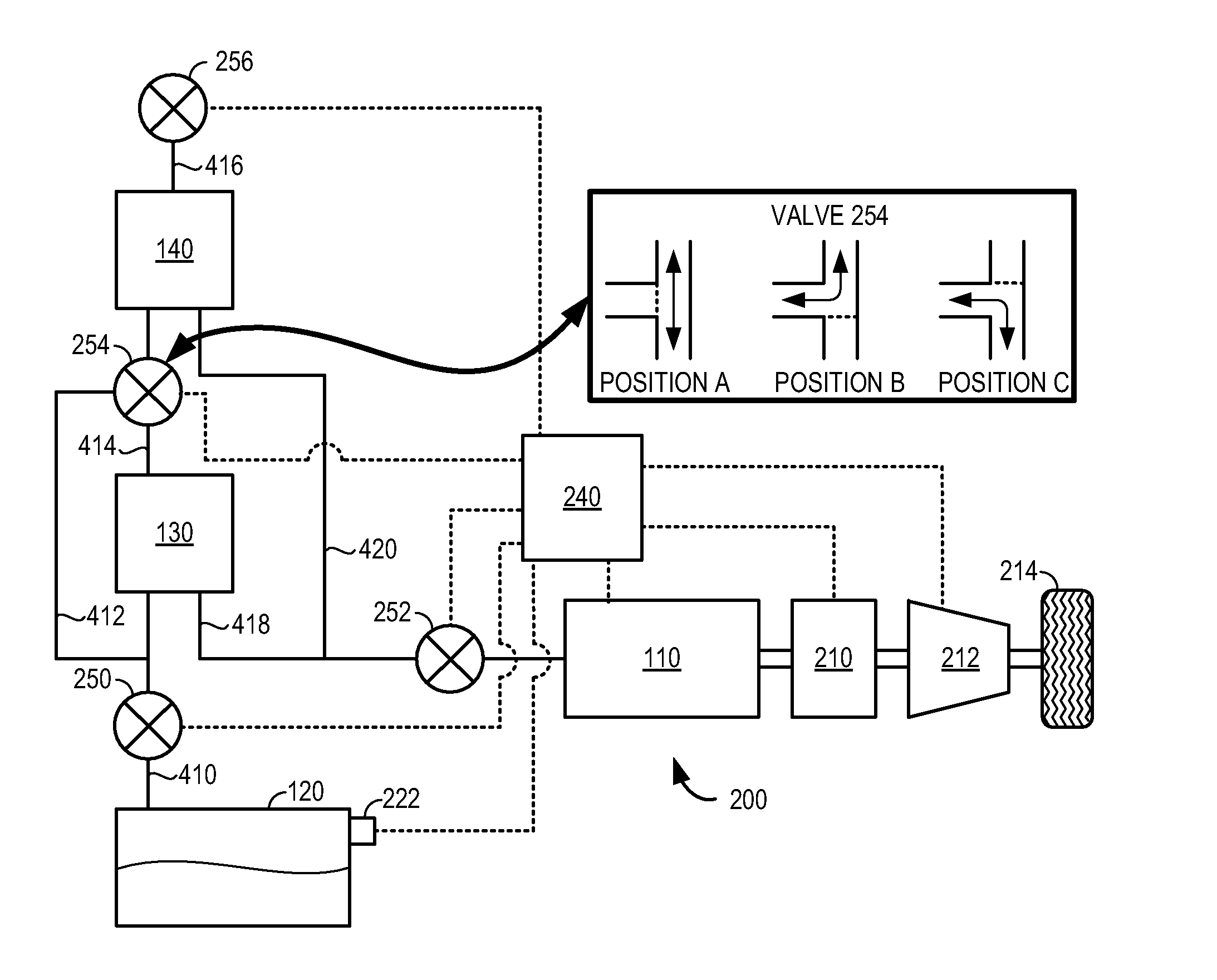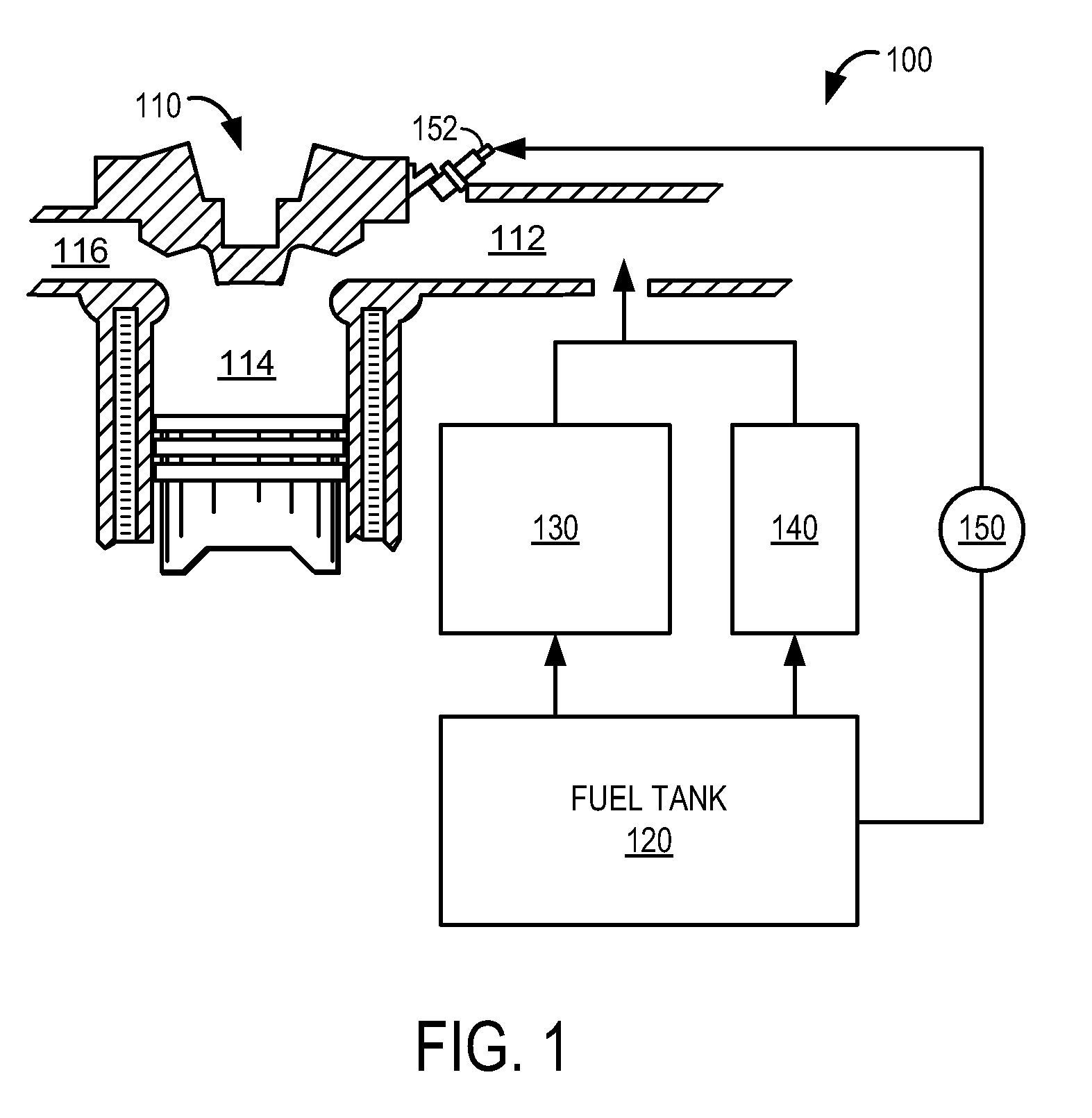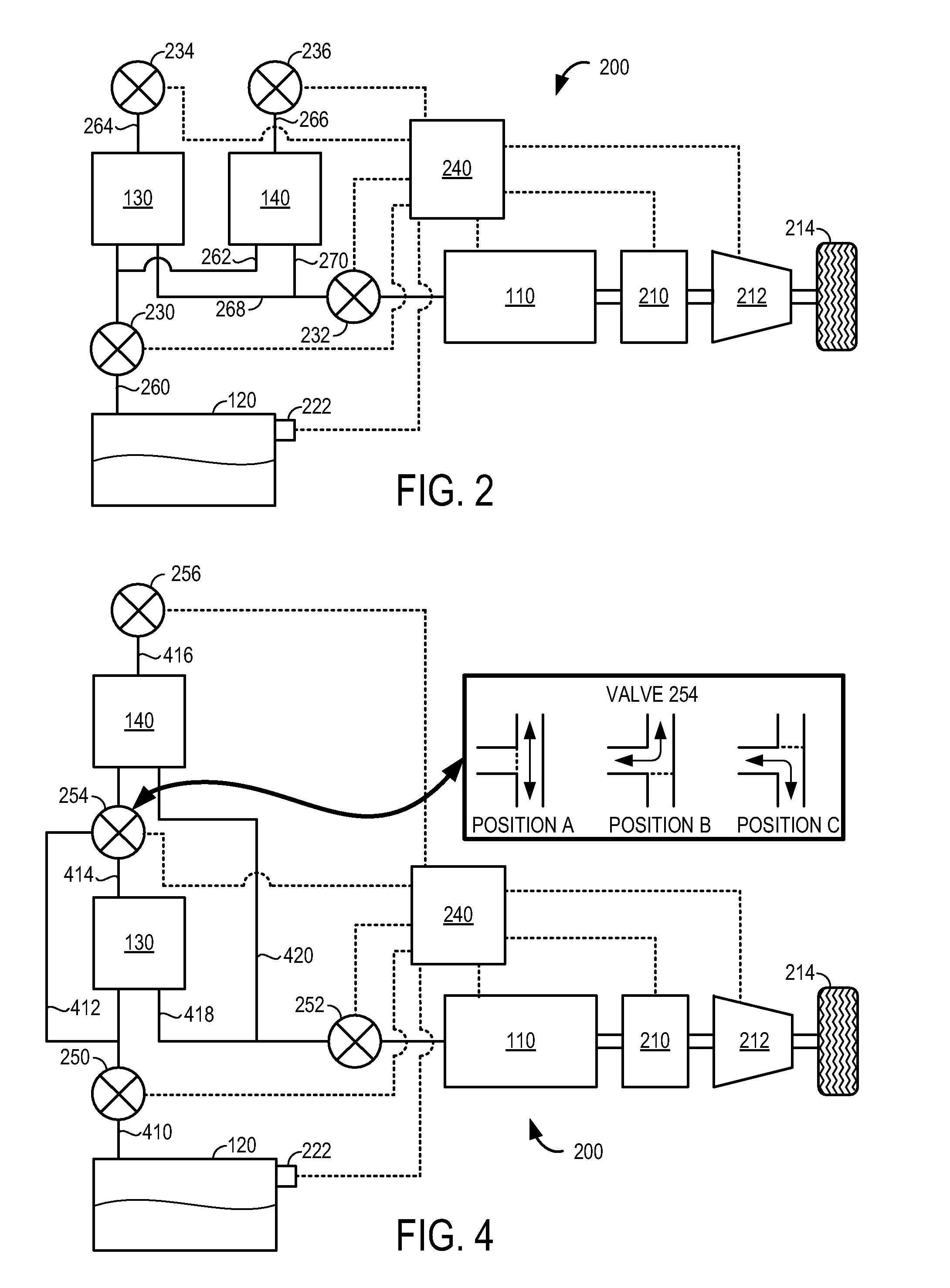Multi-path evaporative purge system for fuel combusting engine
a technology of evaporative purge and combustion engine, which is applied in the direction of combustion air/fuel air treatment, machines/engines, instruments, etc., can solve the problems of limited engine shutdown time, and limited extent to which the purge valve can be opened, so as to improve the fuel efficiency of the engine and increase the engine off time
- Summary
- Abstract
- Description
- Claims
- Application Information
AI Technical Summary
Benefits of technology
Problems solved by technology
Method used
Image
Examples
first embodiment
[0016]The first embodiment, which is described with reference to FIGS. 2 and 3, includes a second canister vent valve. With two canister vent valves in the system the control system can control which path the vapors will flow (i.e. through canister 130 or canister 140). These two canister vent valves can then also be used to select which canister fuel vapors will be purged. During an emissions cycle canister 140 can be substantially purged of fuel vapors before purging canister 130.
second embodiment
[0017]The second embodiment, which is described with reference to FIGS. 4 and 5, includes a three-way valve arranged between canister 130 and canister 140, thus allowing the flow to be directed through only canister 140 or through both canisters 130 and 140. In a similar fashion, this three-way valve can then also be actuated to partition the purge flow in order to substantially purge canister 140 of fuel vapors before purging canister 130.
[0018]FIG. 2 shows a first embodiment of an evaporative purge system for a vehicle propulsion system 200. In this particular embodiment, propulsion system 200 is configured as a hybrid electric vehicle (HEV) including engine 110 and electric motor 210. One or more of engine 110 and electric motor 210 may be operatively coupled to at least one vehicle drive wheel 214 via a transmission 212. For example, where propulsion system 200 is configured as a series HEV, engine 110 may be operated to recharge an energy storage device such as an electric batt...
third embodiment
[0038]FIG. 7 shows a flow chart depicting an example routine for controlling the evaporative purge system. Note that some or all of the valves may be operated by control system 240 as directed by the routine shown in FIG. 7, while some of the valves may be actuated without direct actuation by the control system. For example, some of the valves may be operated as directed by the routine of FIG. 7 based on pressure differences across the valve or by actuators directly linked to the valve.
[0039]At 710 it may be judged whether the engine is on, for example, as described with reference to 310. If the answer at 710 is no, it may be judged at 712 whether the refueling trigger is activated, for example, as described with reference to 312. If the answer at 712 is yes, valve 630 may be opened at 714, valve 636 may be opened at 716, and valves 632 and 634 may be closed at 718 to enable fuel vapors to be stored by at least canister 130 at 720. It should be appreciated that the configuration of ...
PUM
 Login to View More
Login to View More Abstract
Description
Claims
Application Information
 Login to View More
Login to View More - R&D
- Intellectual Property
- Life Sciences
- Materials
- Tech Scout
- Unparalleled Data Quality
- Higher Quality Content
- 60% Fewer Hallucinations
Browse by: Latest US Patents, China's latest patents, Technical Efficacy Thesaurus, Application Domain, Technology Topic, Popular Technical Reports.
© 2025 PatSnap. All rights reserved.Legal|Privacy policy|Modern Slavery Act Transparency Statement|Sitemap|About US| Contact US: help@patsnap.com



